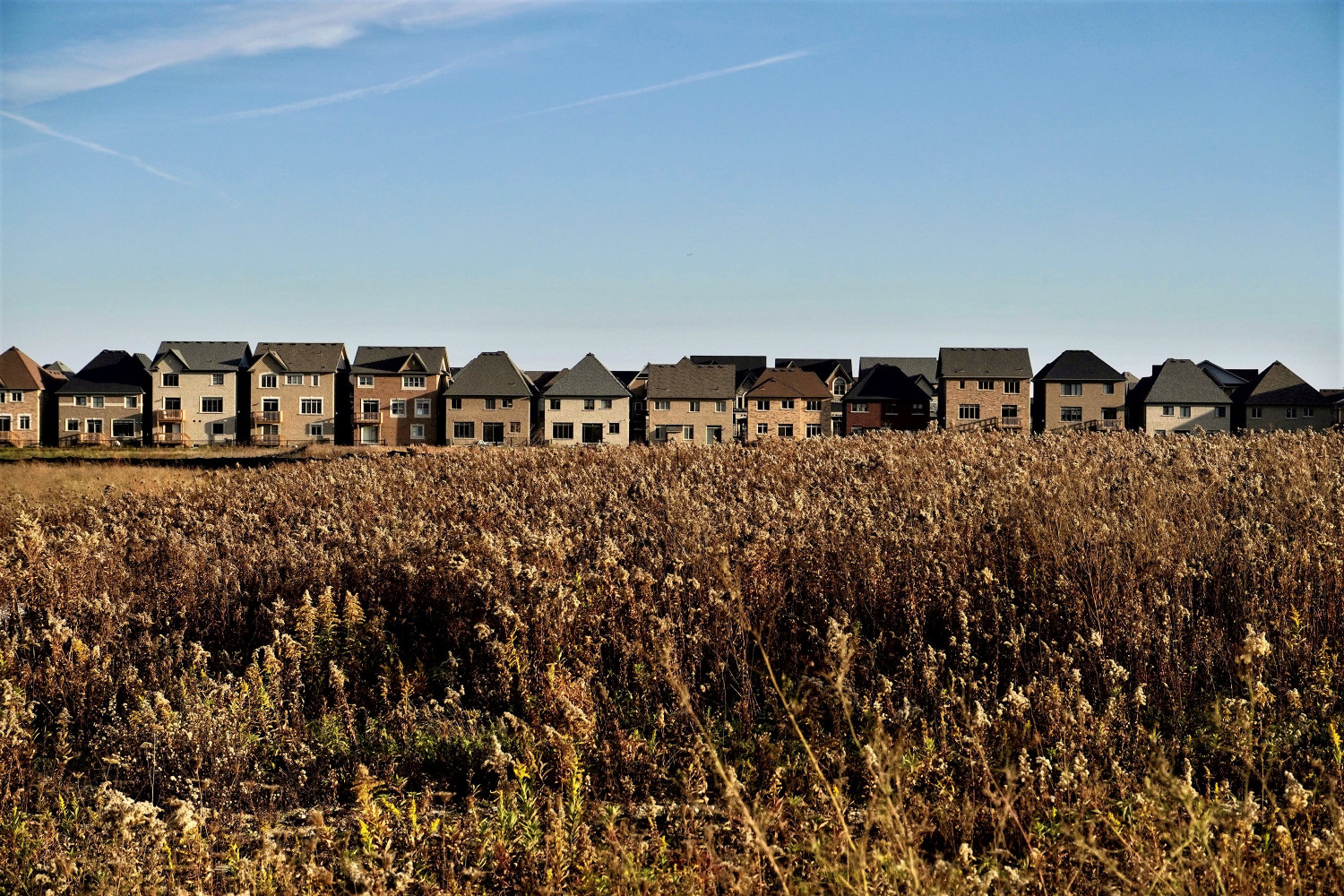
Experts say PCs’ proposed Bill 97 is a sprawl inducing ‘full frontal assault’ on Ontario agriculture
The GTHA has a seemingly ideal mix of land use: dense urban centres surrounded by some of the world’s most fertile soils. The Greenbelt acts as a shield, surrounding Canada’s largest population cluster with clean air, naturally filtered water and thousands of acres to escape the limitations of city life.
Some of Canada’s most fertile agricultural lands sit along and above the Great Lakes sub-basin where some 10 million residents live across the Greater Golden Horseshoe.
The urban megapolis includes Toronto, Mississauga, Brampton, Hamilton and dozens of other municipalities where once fertile farmland was the breadbasket of a giant new country.
Don Mills, a northeastern neighbourhood of Toronto, retained most of its rural characteristics until the end of the Second World War, dotted by family farms supplying food to the surrounding communities. Population growth at the end of the war created immense pressure to expand, and in what seemed like the blink of an eye, the landscape was permanently altered. Where once existed vast farmland checkered by a range of multi-coloured fields, single detached homes with fenced yards and paved roads angling their way around new neighbourhoods rapidly emerged.
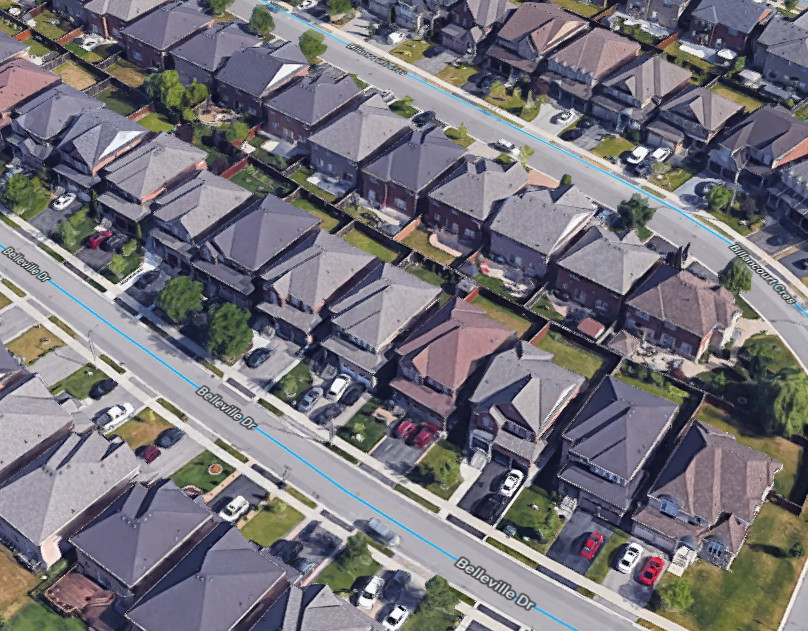
A Peel subdivision.
(Google Satellite)
Don Mills was called Canada’s “first subdivision” bringing with it the birth of sprawl.
It was soon followed by similar patterns in Bramalea and Mississauga, as some of the most valuable agricultural land in the country was turned over to make way for the post-war baby boom and its suburban demographic shift.
As development policies, attitudes and governments have since changed, growth patterns across Southern Ontario began to do the same about 20 years ago. Vertical growth seen across much of the GTHA, in the form of condos that pop up like mushrooms, has dominated cities such as Mississauga, Ottawa and Brampton, while other forms of more dense housing have also populated real estate offerings over the past decade.
In March, according to the Canadian Mortgage and Housing Corporation, the GTA saw 402 single-detached housing starts, compared to 2,780 new home starts in all other categories including condos, townhouses and apartments.
It also reported that last year was the first time Ottawa saw more apartment starts than all other housing types combined.
These types of statistics are the direct result of anti-sprawl legislation and policies first contemplated after the PCs lost power in 2003. The Places to Grow Act was passed in 2005 and ushered in two decades of density to push back on the effects of sprawl across Southern Ontario.
But despite efforts to control the constant spread outward, farmland continues to be gobbled up to make way for more subdivisions. Vertical growth seen across much of the GTHA, in towering condos, has been accompanied by more townhouses, row-houses and apartments while the construction of new single-family homes has slowed but not stopped.
The Building Industry and Land Development Association (BILD) has long advocated for a return to subdivision housing and for more than a decade pushed back against the Places to Grow Act, which forced the construction of more dense housing in the hope of containing the footprint of growth across Southern Ontario.
The current PC provincial government under the leadership of Doug Ford has adopted many of BILD’s recommendations, to address the housing crisis while following the planning approach of the ‘80s and ‘90s, when subdivisions ruled supreme.
This return to the past has been solidified over the past six months with the introduction of Bill 23, the amendments to the Greenbelt Act and, most recently, the proposed Bill 97.
The Greenbelt consists of 2-million acres of protected land to maintain for perpetuity the agricultural, natural heritage, and watershed ecosystems found throughout the arcing expanse that circles the most heavily populated part of Canada. The Greenbelt was only created in 2005 — the Niagara Escarpment and Oak Ridges Moraine were created in 1985 and 2002 respectively which came together under the Greenbelt Plan — when most of the GTHA’s urban boundary had already been developed.
Had the Greenbelt been created 50 or even 20 years prior, it would have included much more land in the southern reaches where instead we now have the northernmost outcroppings of suburban sprawl.
As is evident from the example of Don Mills, much of what is not built up in the GTHA was once vital farmland. The Greenbelt holds what remains.
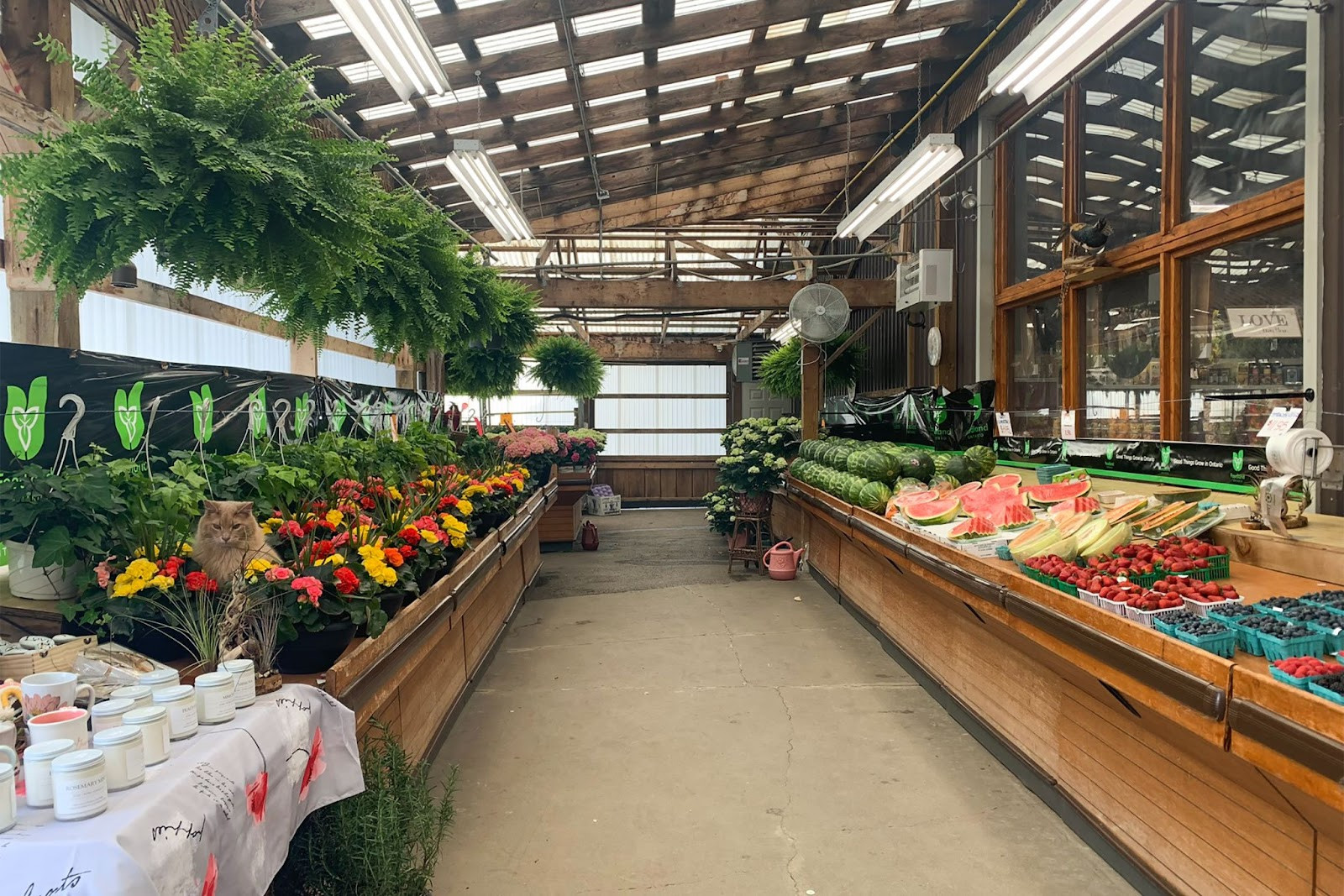
Small farm shops and markets are becoming less common as farmland is paved over. Despite this, farmers say there is a large demand for locally produced food.
(Alexis Wright)
Victor Doyle, best known as the architect of the Greenbelt Plan, told The Pointer its boundaries were not arbitrarily decided. The landscape was carved out by the retraction of the Laurentide ice sheet approximately 10,000 years ago, leaving with it deposits of nutrients creating rich soil suitable for agriculture. Much of the rest of Ontario lies within the Canadian Shield with very different geologic characteristics and poor farming potential.
“Things are where they are for a reason,” Doyle said. “If you keep removing land along the south side of the Greenbelt, for instance, and adding land on the north or west, eventually the Greenbelt is going to be in a far different location than it was. And that makes no sense in terms of protecting the value of the landscape.”
In a push to build more homes across the province, the Ford government is proposing to do just that, removing land from the Greenbelt and pushing urban boundaries right to its edge, or, in some cases, within the protected corridor, despite fact-based direction from scores of urban planners — including the government’s own housing task force — that land is not the issue behind the current housing crisis.
“High level, what's happening is the government is dismantling land-use planning and environmental legislation policy regulation across Ontario, but particularly in the Golden Horseshoe under the guise of providing for housing,” Doyle said. “And it's a completely false narrative, because there's tons of land approved for housing.”
In November, Bill 23 was enshrined, “cutting through the red tape”, as the PCs put it, that is supposedly hindering development.
The numbers do not support the claims.
According to the CMHC, in 1995 there were about 37,000 housing starts across Ontario, by 2011, under Places to Grow, there were roughly 60,000 starts, and 2021 and 2022 (which reflect the planning process in place before the recent changes took effect) saw the highest number of housing starts in more than 30 years, with an average of about 97,500 new starts each of the last two years.
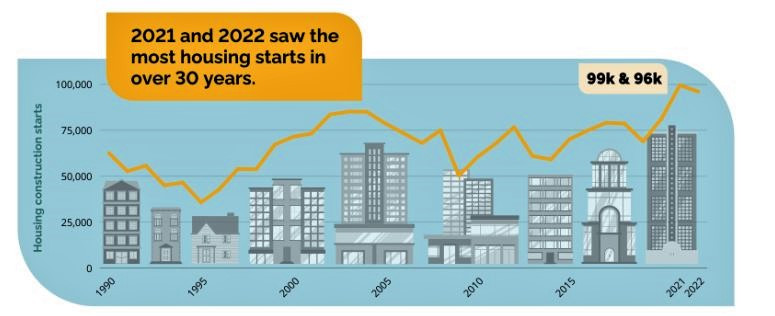
(Government of Ontario: Source CMHC)
The facts show the PC claim of red tape hindering the development industry, a narrative long pushed by BILD, simply is not true.
Nonetheless, Ford, who has been in lockstep with BILD, has pushed through his legislative changes to make it even easier to get houses built, with hardly any public oversight or input from communities.
These changes include an overhaul of the mandate of conservation authorities, limiting their ability to comment on development applications; changes to the wetland evaluation system which in turn make it easier to build around and even in sensitive ecosystems; and the downgrading of planning authority from upper to lower-tier municipalities.
Bill 23 was quickly followed by changes to the Greenbelt Act which cut out 7,400 acres of land making it suitable for development and replacing it with 9,400 acres elsewhere. The newest change to provincial development legislation comes in the form of the proposed omnibus Bill 97, the sweeping Helping Homebuyers, Protecting Tenants Act. Currently in its second reading at Queen’s Park, the proposed Bill was referred last week to the Standing Committee on Heritage, Infrastructure and Cultural Policy.
To achieve their goal of building 1.5 million new homes by 2031 (which is about three times more than the historic rate) the PCs want to amend various statutes with respect to housing and development, and create a new Provincial Policy Statement (PPS), which will be called the Provincial Planning Statement, with changes including:
-
A repeal of the Growth Plan, a map and strategy that have guided much of the growth across southern Ontario since 2005;
-
The elimination of specified intensification targets that previously required municipalities to plan for a certain amount of growth within defined built boundaries;
-
The eradication of the concept of a built up boundary and municipal comprehensive reviews, allowing municipalities to consider settlement expansions at any time (in 2022, Region of Peel Council voted to expand its urban boundary into 11,000 acres of farmland. Under Bill 97, the concept of an urban boundary would be obsolete);
-
The removal of employment lands and reclassifying them for development and the removal of provincially significant employment zones;
-
The assertion that municipal official plans and zoning bylaws cannot be more restrictive than provincial legislation;
-
Permission for additional residences on farm properties, allowing for agricultural lands to be severed into three additional plots; and
-
The elimination of the mandate that agricultural land and wildlife habitat that is sacrificed for development must house a minimum of 50 residents per hectare (The elimination of this mandate comes after the government previously decreased the number of residents per hectare from 80).
“These are all extremely regressive actions that have nothing to do with housing,” Doyle said.
The changes proposed in Bill 97, to support Bill 23, will effectively allow agricultural land to be turned over for development much faster and without density requirements meant to control sprawl.
Martin Straathof, executive director of the Ontario Farmland Trust, said the changes from the old PPS (the PCs want the new PPS to be in effect before the end of the year) look minor at first glance, but the connotation of particular words is what makes the legislation so significant.
“Something like changing the words from ‘shall’ to ‘should’ or ‘encouraged’. It really restricts any requirement from a municipality standpoint, to do any sort of an assessment that says, ‘No, don't go out onto prime agricultural land’,” he said. “Even the option of using an agricultural systems approach is ‘encouraged’, when really, it should be required.”
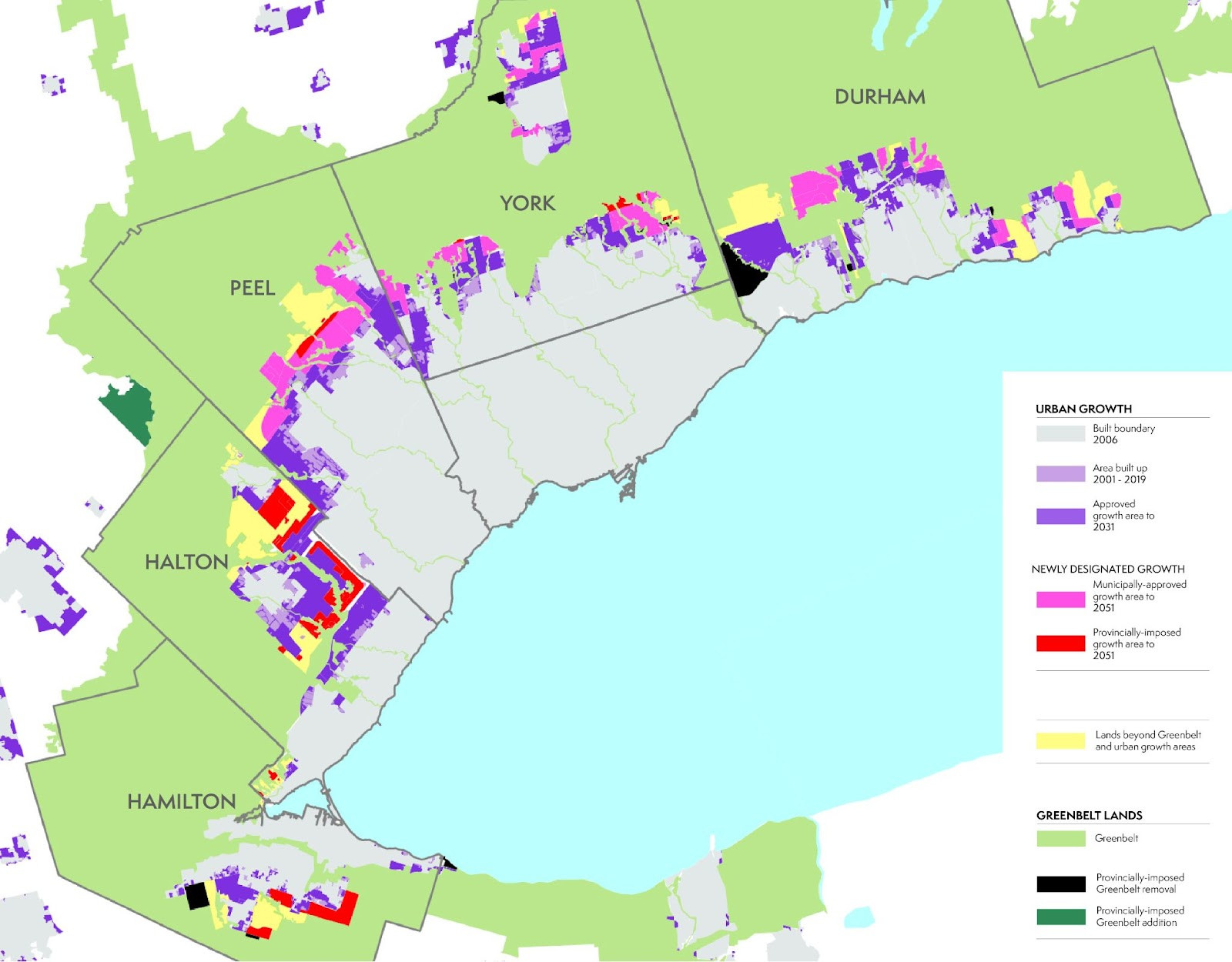
Development is encroaching on the southern border of the Greenbelt, but this vital land cannot be replaced elsewhere.
(Friends of the Greater Golden Horseshoe)
Ahmed Mirza, a coordinator with the Peel Food Action Council, and Straathof stressed that Bill 97 is only the tip of the iceberg, building on Bill 23, and the changes to the Greenbelt Act that came before it. Both experts agree these changes will exacerbate farmland loss and have devastating consequences for the agricultural sector in Ontario.
Farming in Peel is already under grave threat due to climate change. The threat urban sprawl poses to farmland loss is another layer that compounds the looming problem. Based on the 2012 Municipal Property Assessment Corporation assessment, approximately 45 percent of the region’s total land base was used for farming, mostly within the Town of Caledon. But this farming base has been in sharp decline over the past few decades. In 2011, there were 440 farms across Peel Region. According to the 2021 Census, there are 377 farms, a 14 percent decrease in one decade.
As of July 1, 2017, amendments to the Ontario Growth Plan for the Greater Golden Horseshoe (GGH) began which included new policies to better manage and protect farmland in GGH growth areas. The document highlights that agricultural areas “will provide a significant contribution to the region’s resilience and our ability to adapt to a changing climate. Unique and high quality agricultural lands will be protected for the provision of healthy, local food for future generations. Farming will be productive, diverse, and sustainable.”
If Bill 97 is passed, it will infringe on these protections.
“We're going to see that rate of farmland [loss] increase,” Straathof said. “When we should be seeing higher protections to decrease that rate of farmland loss, this is going to do the absolute opposite to it.”
“It's not something to be taken lightly,” Mirza said. “We would be developing on the Greenbelt, we will be taking away space that is meant for our local growing, and our local food system.”
He is an urban agriculturalist by trade and works with community garden programs. His own program, called Happy Plant, has been running for a couple of years and works with community members to grow food and take it to farmer’s markets where they collaborate with other community gardens. He joined Peel Food Action Council in 2021 as a core member where he works as a food justice advocate pushing for food security across the region.
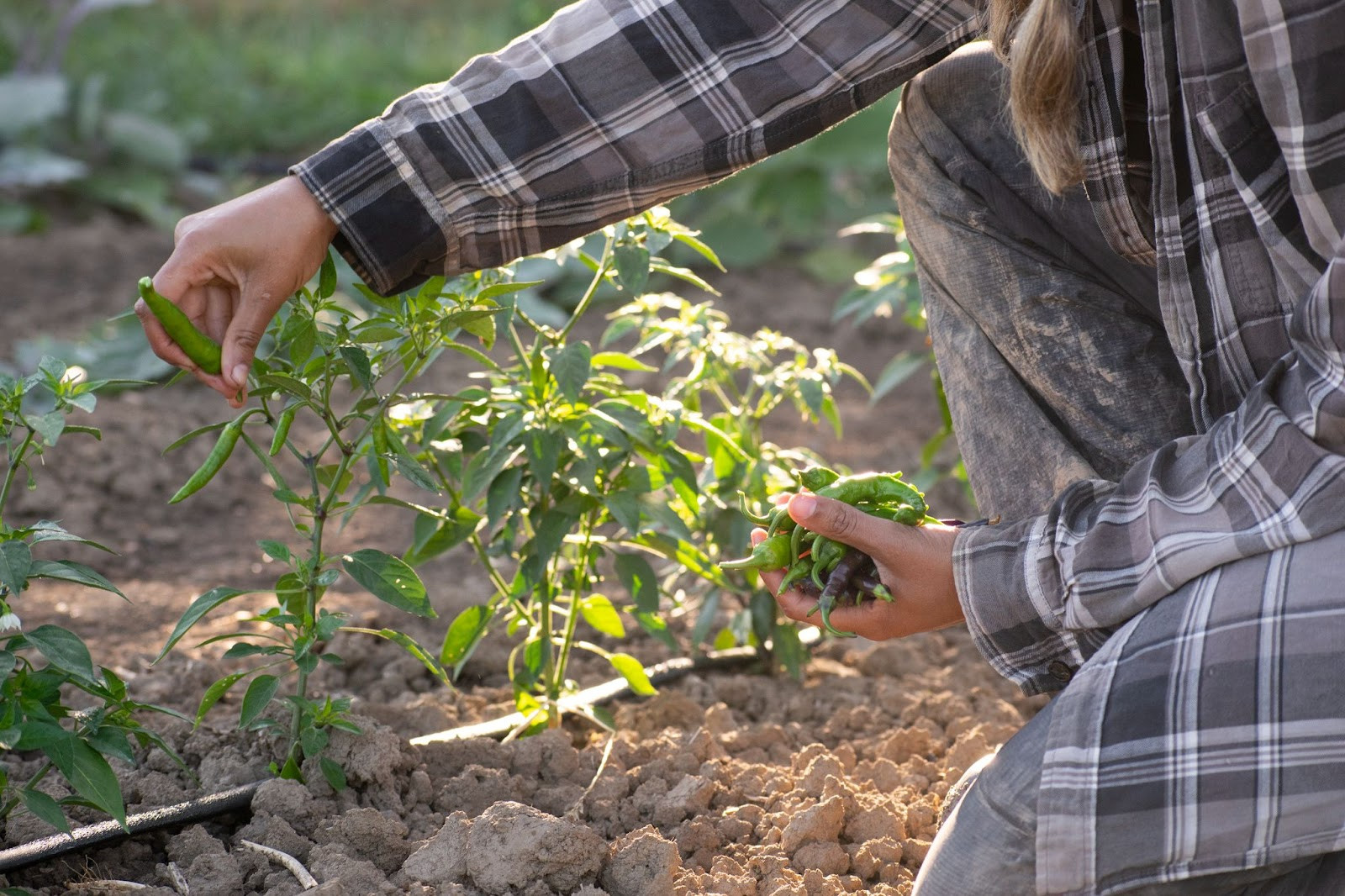
Local food security is an increasingly troublesome issue across the province as Ontario loses 319 acres of farmland per day.
(Alexis Wright)
Local food security is under threat, he fears.
“From a food systems perspective, you always want to have local access to food. From an economic perspective, you always want to have food that's accessible nearby,” he said. “Once you start purchasing food from far away, and especially for millions and millions of people, the cost of food goes up a lot.”
Mirza worries that as the region’s population continues to increase, and sprawling communities continue to be built to accommodate this growth, there is no telling what the ultimate impact will be on local food security.
It has been estimated Peel will grow to a population of 2.2 million, up from 1.5 million, by 2051. But under Bill 23, the region is expected to build 246,000 new homes, mostly in Mississauga and Brampton, which could push the population close to 2.5 million in just eight years, by 2031, which is the target under the legislation to get 1.5 million homes constructed across Ontario. Caledon might not be able to control its own growth under the PC legislative agenda, and its vast tracts of available land could see its population explode the way Brampton’s did over the past thirty years. Developers have already assembled much of the farmland between the Greenbelt and Caledon’s southern border, and if the 413 Highway is built it will only speed up subdivision-style growth across the municipality.
While all that local farmland is lost, it is estimated the cost of food will rise another seven percent this year with vegetables anticipated to rise between six and eight percent, and fruit between three and five percent. Apollo insurance company estimates the average cost of groceries for a single person living in Toronto would be around $360 per month. The costs would be similar for those living in Peel. With the average Ontarian bringing home $3,250 per month (based on a $39,000 salary), food would take up 11 percent of their pre-tax earnings.
“All of this affects the people that are the least enfranchised, the least fortunate,” Mirza said.
Bill 97 would make it more difficult for the next generation to farm on the agricultural land that still exists.
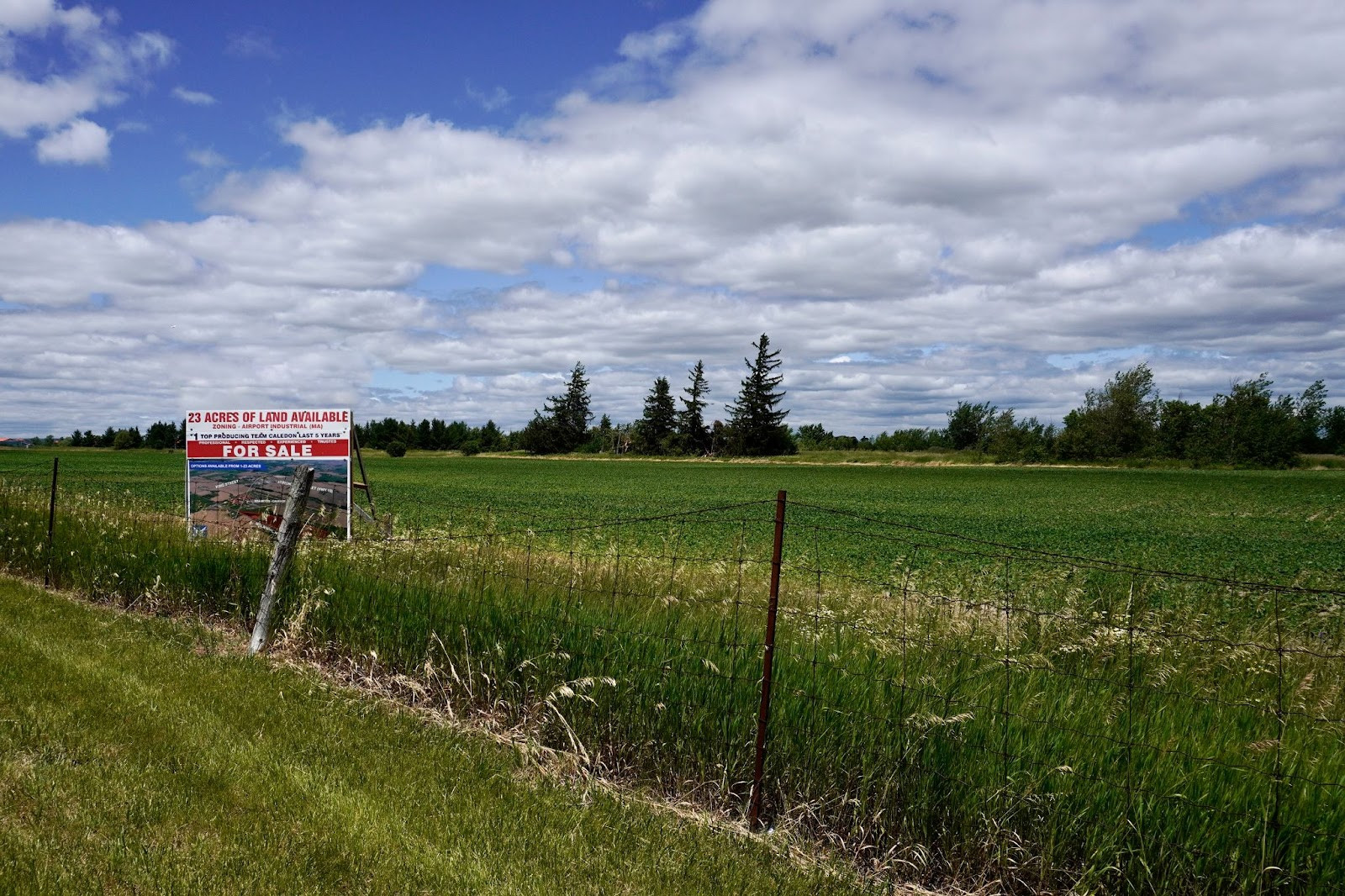
Bill 97 will make it easier to divide up farmland, and use it for forms of development that reject density.
(Alexis Wright)
Straathof said Ontario has already been seeing an increase in farm amalgamation which has made it more difficult for smaller farms to compete, and “this notion that in order to be able to remain viable or competitive is that the farms need to get bigger”. Simultaneously, the allowance for farm lots to be severed, if Bill 97 is passed, will dramatically up the prices of the properties, keeping them out of reach for local farmers who might want to expand.
The Region of Waterloo has a bylaw that was established in 1973 that prohibits carving out and selling off farmland that results in farms of less than 80 acres. Bill 97 will overrule this legislation.
If Bill 97 is passed, a farm lot could be severed three times.
“So we're seeing a lot more people who are not farmers buying farmland to be able to put their money into an investment…with the hopes that they can turn it around and sell it for a profit,” Straathof said. He worries it will never “be farmers who own farmland anymore?”
“This seems like a full frontal attack on the agricultural sector…and the eroding of the agricultural food system, with the very foundation being our farmland.”
Some organizations are hoping public consultations on Bill 97, lasting until June, after Bill 23 was rammed through alongside changes to the Greenbelt Act, will force reasonable amendments to the proposed legislation. But Straathof said he fears the government still isn’t listening.
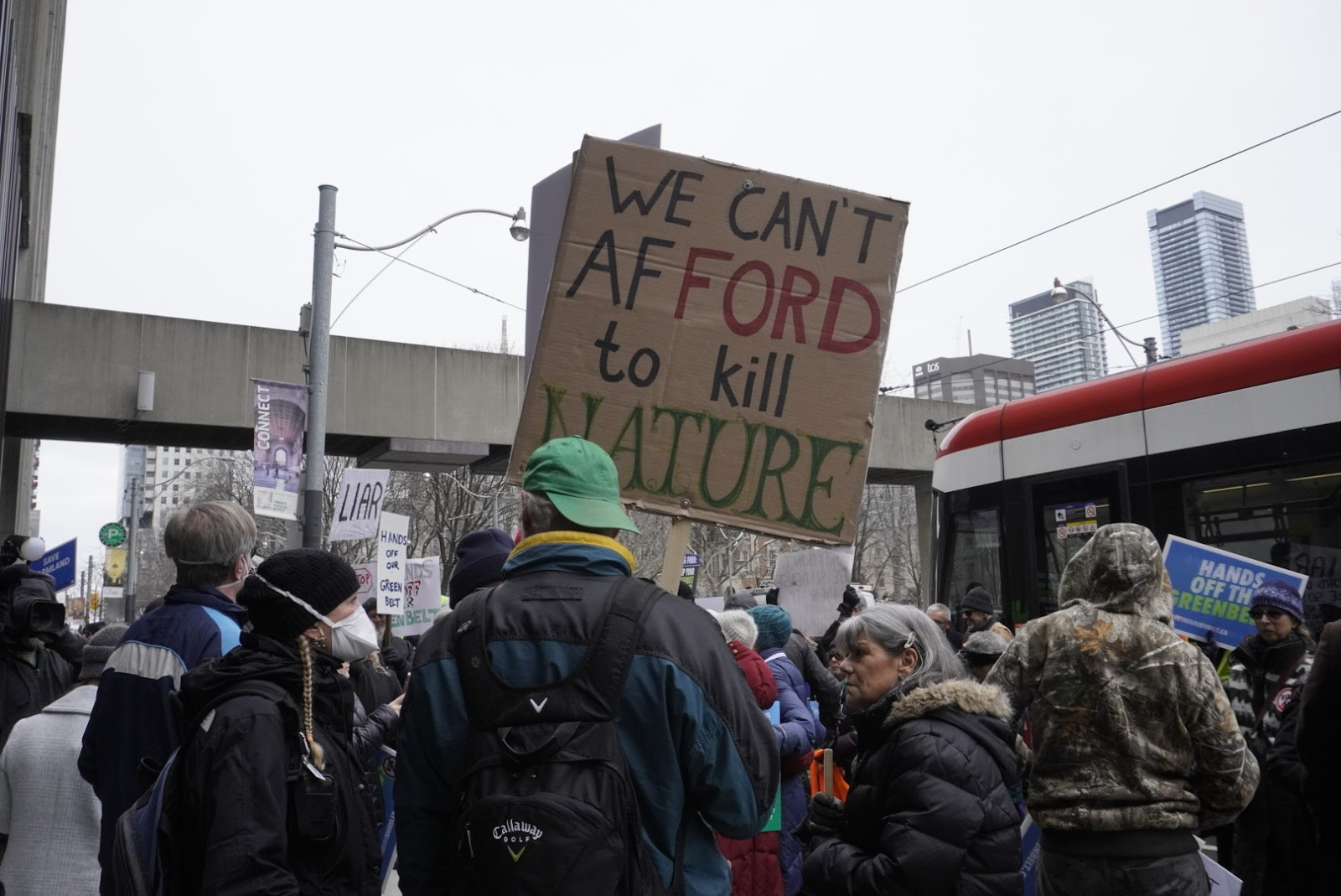
Protests took place all across Ontario in opposition to Bill 23 and the Greenbelt carve outs late last year. Despite massive opposition, the legislation passed without amendments.
(Alexis Wright)
The PCs ignored widespread public backlash to its aggressive housing plan late last year.
“‘Is the government listening to us?’ is a major concern. Will they make changes? That's yet to be seen,” Straathof said.
A report by registered professional planner Kevin Eby, for The Alliance for a Liveable Ontario, concludes there is more than enough land within existing urban boundaries across the Greater Golden Horseshoe to accommodate the unprecedented housing targets imposed by the provincial government, a sentiment that has been shared by other planners, politicians and environmentalists. Eby’s analysis shows there is significant land in the GGH that could provide upwards of two million units, greater than the government’s target of 1.5 million for all of Ontario.
“When I see something like that [the report], that doesn't have anything to do with the planning systems at play,” Straathof said. “And yet, what this legislation is doing is completely turning good planning practices that we have been developing for decades in order to prevent things like sprawl, and environmental degradation, and farmland preservation, turning it on its head, permitting all those things again.”
“You have to stop and wonder, ‘what is it that either they're not seeing, or why is it that they feel like agriculture is an industry to be going after this way?’”
Doyle agreed the PCs seem determined to use a heavy handed approach.
“What they're doing then is basically overriding municipalities and silencing citizens by restricting their rights to appeal, to participate, to consult,” he said.
Doyle said his hope is that Bill 97 does not pass, at least in its entirety. But even so, the PCs have already enshrined dangerous development legislation with very little hope of it being repealed.
“Hopefully we'll get a more progressive mind elected in the next election. But this government has approved so much land,” Doyle said. “And there's no turning back.”
Email: [email protected]
Twitter: @rachelnadia_
At a time when vital public information is needed by everyone, The Pointer has taken down our paywall on all stories relating to the pandemic and those of public interest to ensure every resident of Brampton and Mississauga has access to the facts. For those who are able, we encourage you to consider a subscription. This will help us report on important public interest issues the community needs to know about now more than ever. You can register for a 30-day free trial HERE. Thereafter, The Pointer will charge $10 a month and you can cancel any time right on the website. Thank you
Submit a correction about this story


